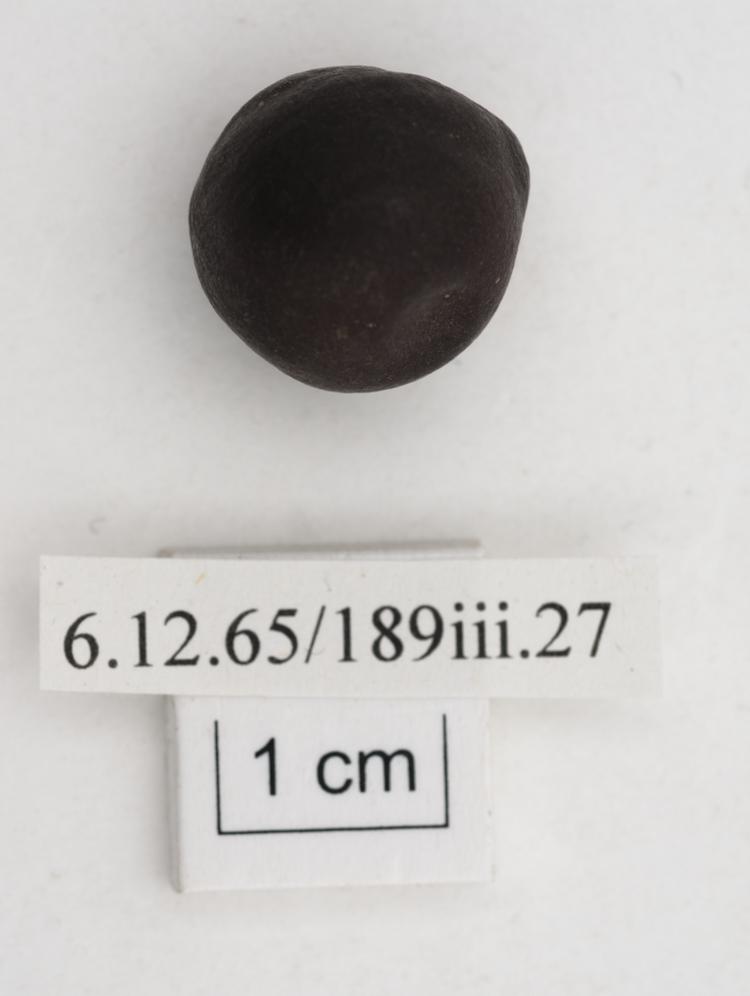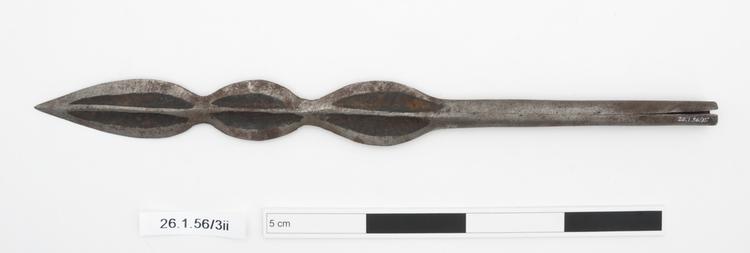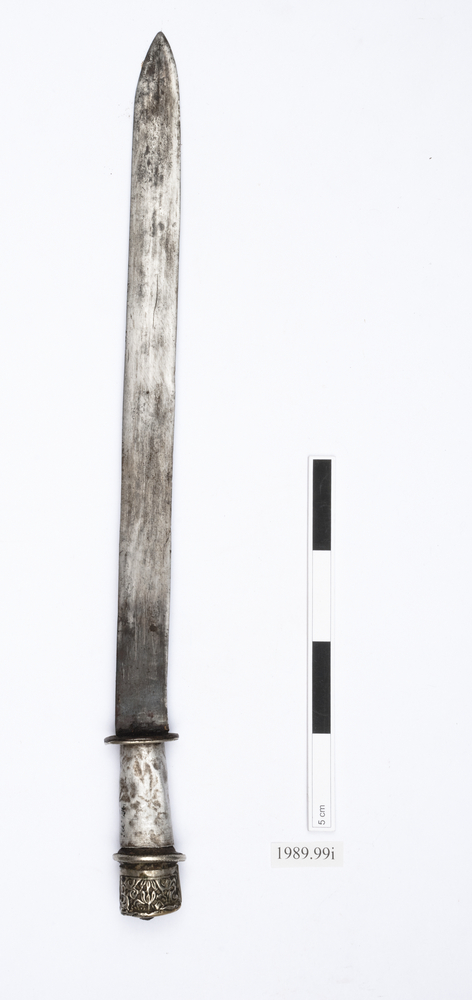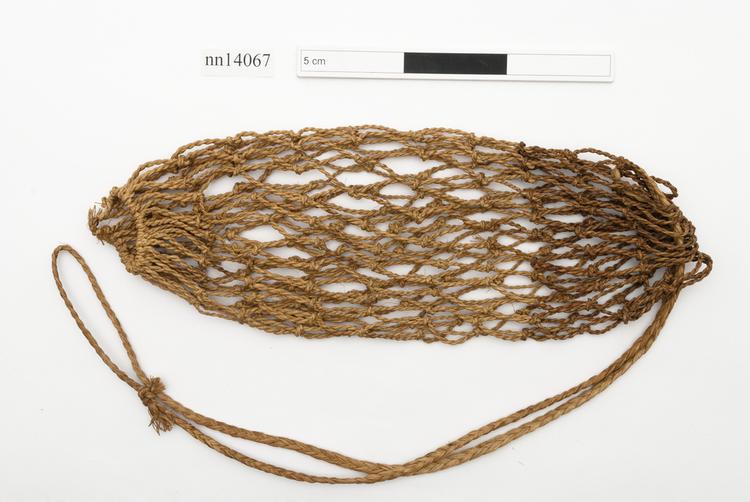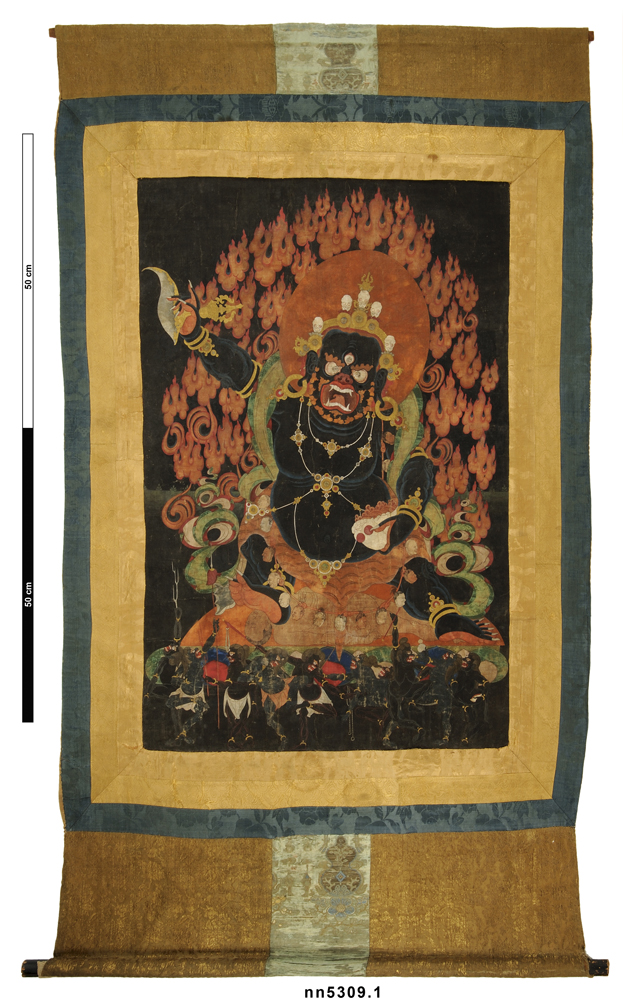
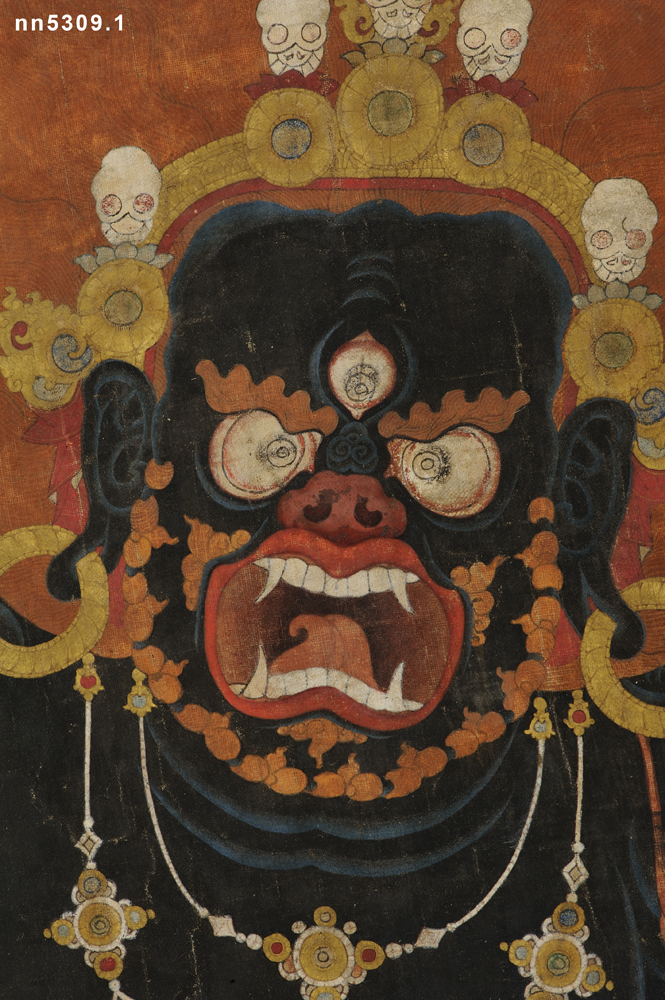
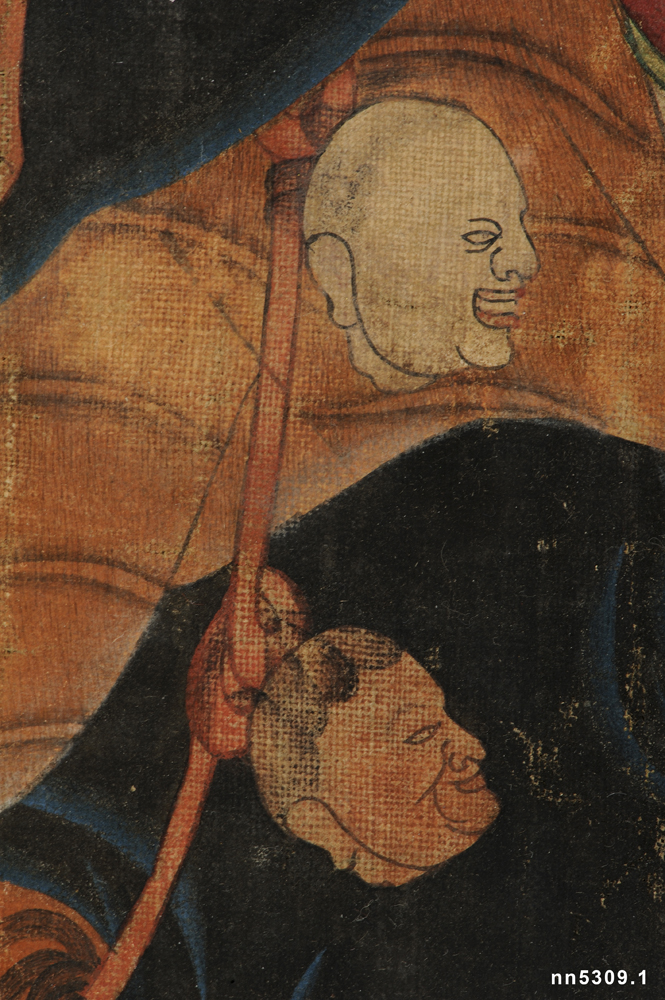
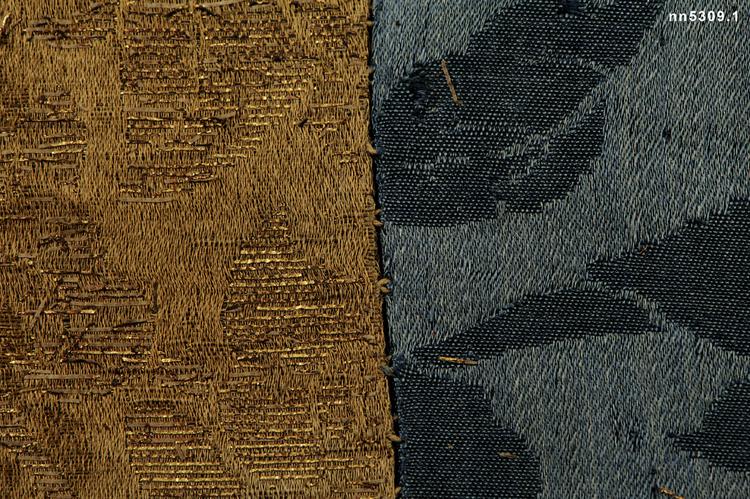
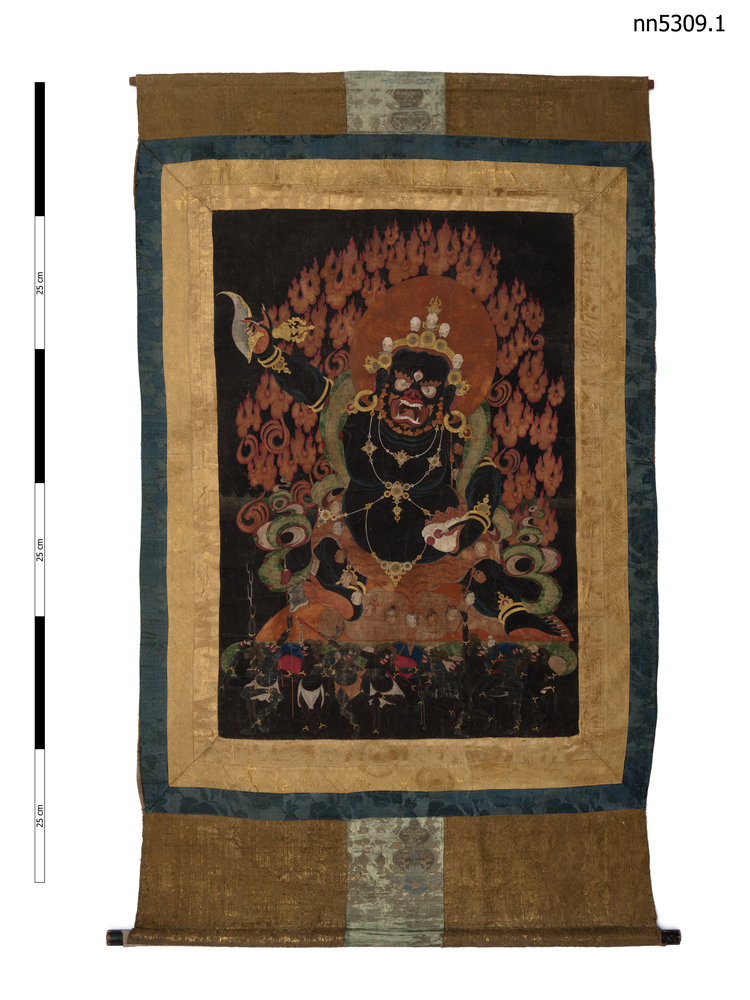
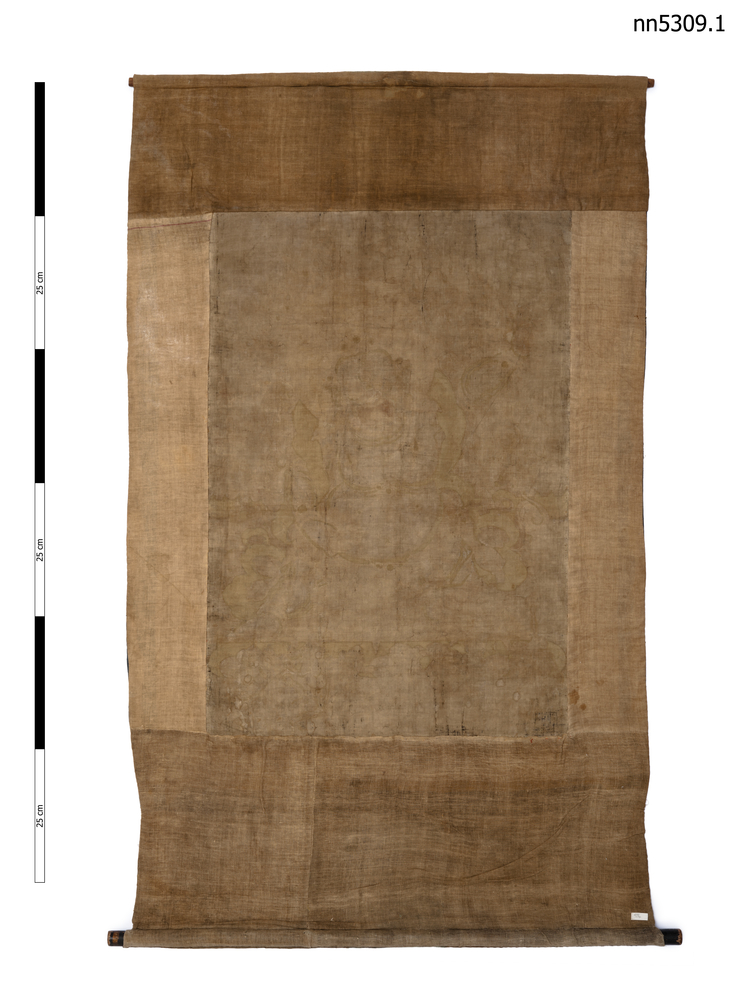
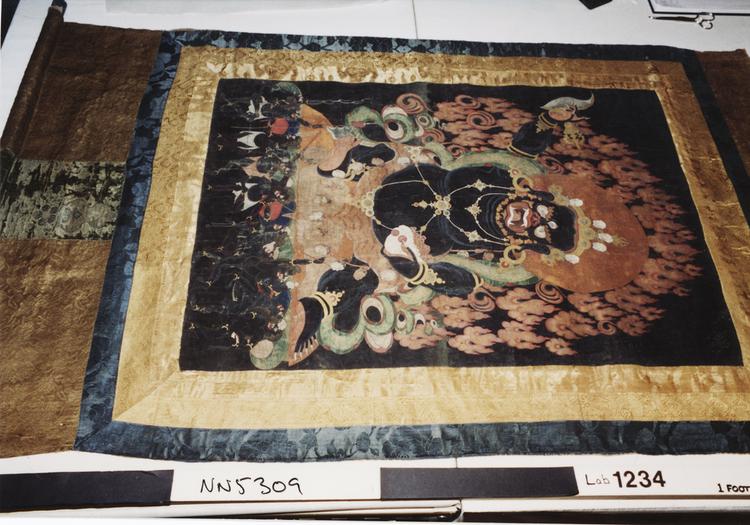
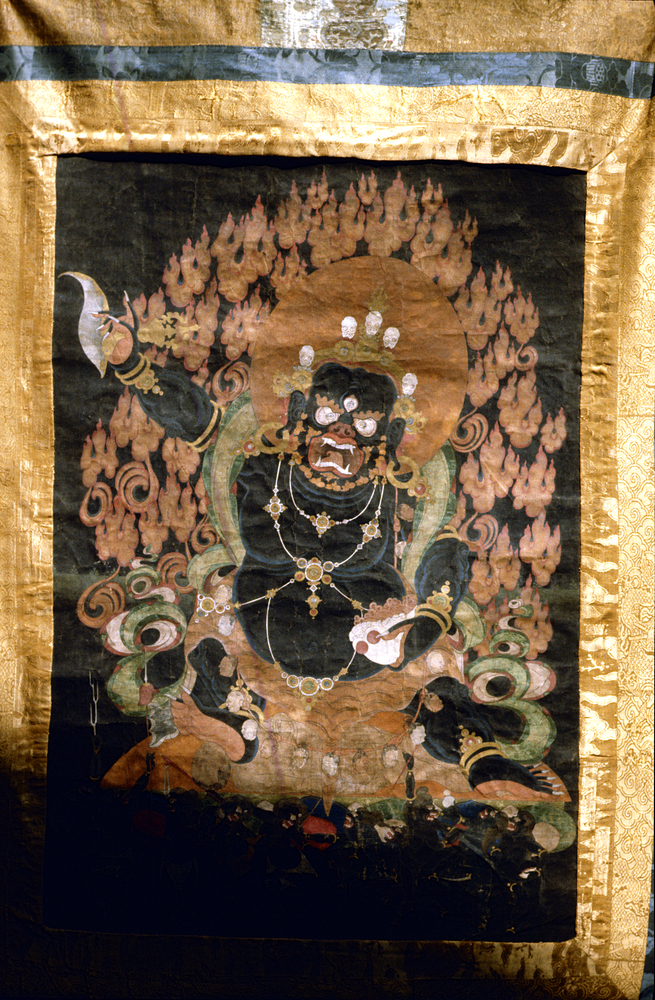
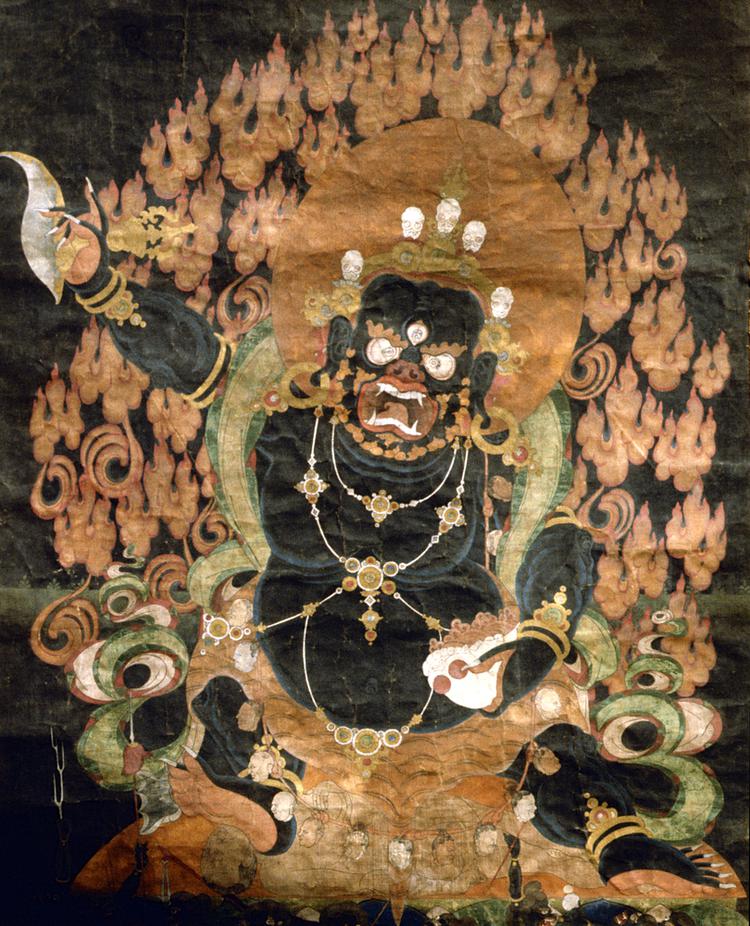
Painting on silk, thangka. Painting depicts Yamantaka, the destroyer of death, with a crown of skulls, surrounded by flames. In his right hand he holds a flaying knife and in his left, a skull cup. He wears a tiger skin and is trampling a man. Along the base are eight black and dark blue members of his retinue. Picture bordered by green and yellow silk, wooden supports at either end.
Thangka are devotional paintings which are particularly associated with Vajrayana Buddhism. They are always executed on cloth and often have ornate fabric surrounds and covers. Thangka can fulfil several different purposes - they are for example often used as teaching aids - however, perhaps their most important role is to focus meditation. Thangka that are used for meditation will generally depict a yidam; a special deity, the particular attributes of which assist a practitioner’s spiritual progression. A yidam is often allocated to a practitioner by a mentor who understands the practitioner’s specific needs. By inhabiting the body and attributes of the yidam through meditation a practitioner can work to erode the obstacles to enlightenment. Since thangka are sacred objects their manufacture follows careful guidelines. For example, thangka painters must follow pre-established templates when depicting specific deities. Not to do so would jeopardise the efficacy of the thangka. It is also argued that thangka painters should approach their work in a right-minded manner; the large-scale manufacture of thangkas for sale to the international market, is for some a distortion and a devaluation of the practice of thangka painting.



